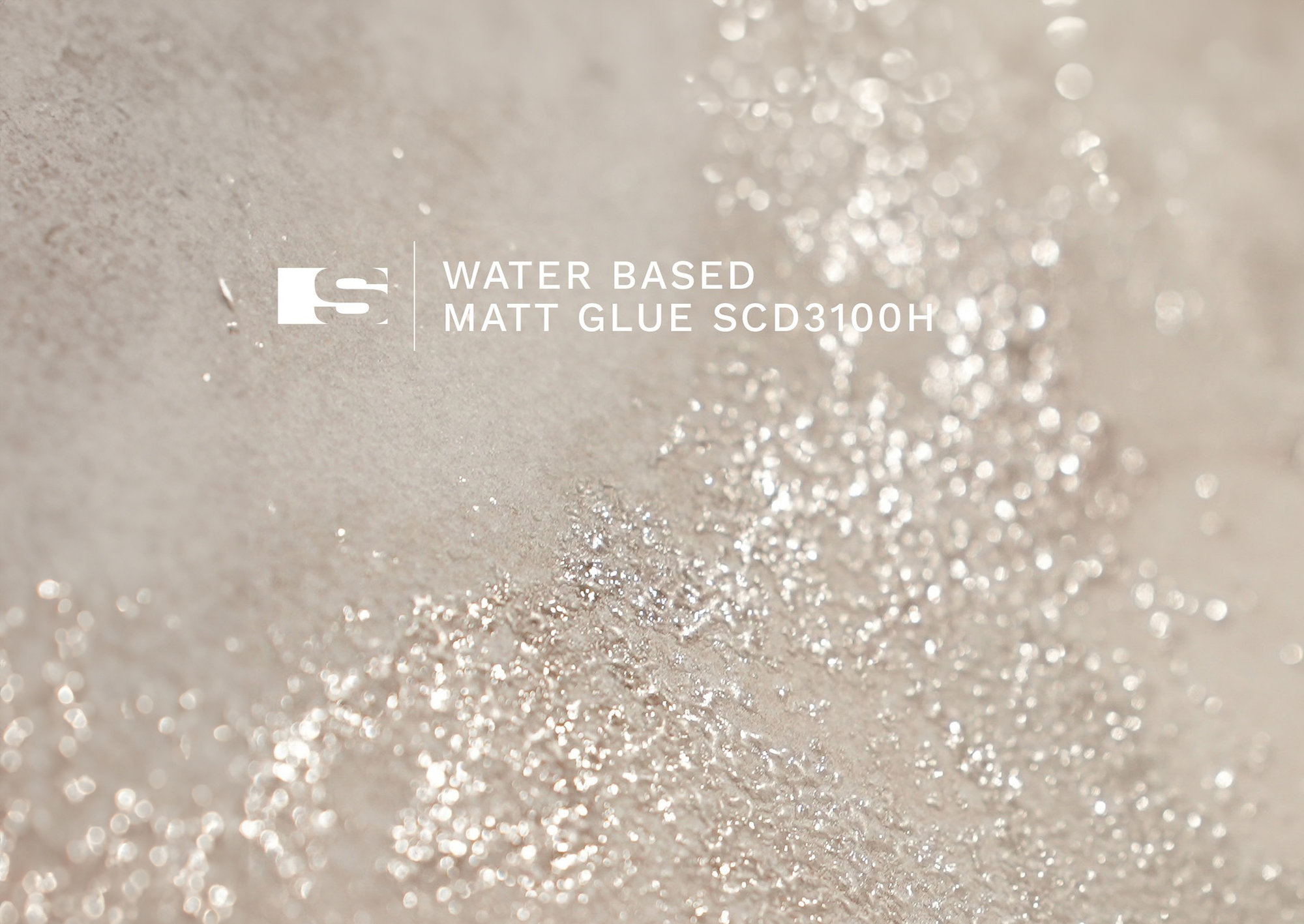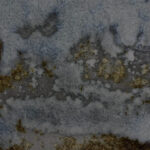Index
- Sustainable digital printing for ceramics: Innovation, water-based inks and adhesives for green laboratories
- Principles and advantages of sustainable digital printing for ceramics
- Why choose water-based inks and adhesives
- Low environmental impact digital inks: innovation and results
- Certifications and reporting for sustainability in ceramic laboratories
- Future challenges and opportunities for sustainable digital printing in ceramics
- Conclusions
- FAQ
Sustainable digital printing for ceramics: Innovation, water-based inks and adhesives for green laboratories
Sustainable digital printing is now one of the key issues for ceramic workshops aiming for a more responsible future.
Interest in eco-compatibility has never been so high, driven by increasingly stringent regulations and the need to reduce the environmental impact of production.

In particular, the use of water-based inks and materials makes it possible to drastically reduce harmful emissions without compromising print quality or color definition.
In ceramic factories, the adoption of sustainable solutions brings concrete benefits for both companies and the environment: lower emissions into the atmosphere, healthier working environments, and end products that meet the needs of the most demanding markets.
In this scenario, research into green digital inks and adhesives translates into efficient production processes, consistent quality, and new decorative possibilities. For those working in laboratories, choosing sustainable digital printing means investing in competitiveness, innovation, and respect for future generations.To learn more about the latest developments in sustainable digital inks, discover how water-based technology is changing the way environmentally conscious ceramic companies work.
Principles and advantages of sustainable digital printing for ceramics
Sustainable digital printing has changed the way ceramic production is conceived, opening up new perspectives both in the laboratory and on the production line.
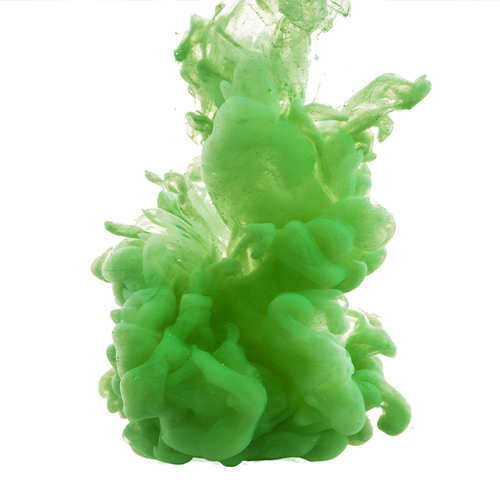
It is not just an ecological choice, but a truly integrated approach that combines efficiency, quality, and responsibility towards the future.
Solutions such as water-based inks and adhesives have become key elements in a concrete transition to production models that are less impactful and more efficient.
Let’s take a closer look at the principles and advantages that make this technology a safe investment for any ceramic workshop.
The pillars of sustainable digital printing
Sustainable digital printing for ceramics is based on a number of key principles:
- Reduction of harmful emissions: the use of water-based inks and adhesives drastically reduces emissions of volatile organic compounds (VOCs), formaldehyde, and aldehydes during firing, creating a safer and more people-friendly working environment.
- No odors: advanced formulations guarantee virtually odorless products, significantly improving comfort in production areas.
- Efficiency and flexibility: digital technologies allow for precise material deposition, promoting flexible production even with small batches and quick changes between different graphics.
- High definition: there is no longer any need to choose between sustainability and quality. Water-based inks maintain high color intensity and detail, making any decorative effect possible.
- Compliance with stringent regulations: compliance with European and international emission limits becomes easier and more immediate.
Those who wish to learn more about the overall approach can find practical ideas in the article dedicated to sustainable innovation in ceramic processes.
Why choose water-based inks and adhesives
There has been growing interest in the raw materials used for digital ceramic printing, thanks to the concrete results guaranteed by water-based technology:
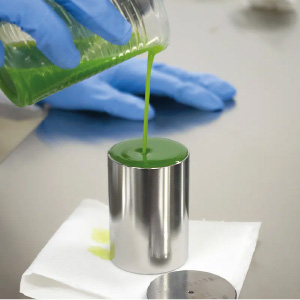
- Uncompromising quality: formulations specifically designed for ceramics allow for uniform surfaces, without defects due to evaporation or tension between materials.
- Greater compatibility: these solutions can be easily integrated with different substrates and grits, for both full-field and decorative applications.
- Direct environmental benefits: the use of water-based products contributes to the reduction of total organic carbon (TOC) and odorous substances emitted from the chimney.
Many of the practical advantages of this type of product are explored in depth in the guide to the advantages of low-emission inks.
Tangible benefits for the ceramic laboratory
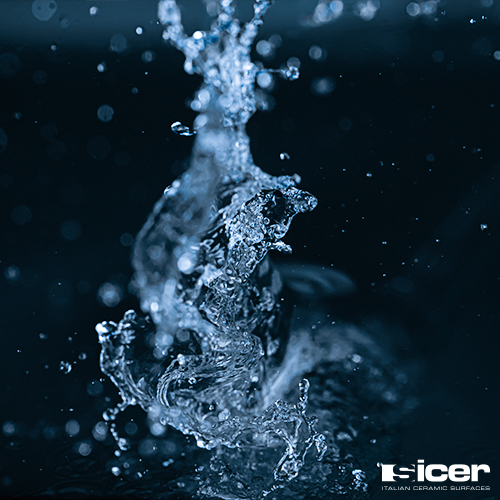
Switching to sustainable digital printing brings immediate benefits to the production cycle:
- Reduction of emissions into the atmosphere, even without interventions on abatement systems.
- Increased safety and well-being for people in the department.
- Easier to work with customers who require stringent environmental certifications.
- Greater appeal of the finished product in markets that are sensitive to green issues.
An additional benefit is the ability to offer customers increasingly customized solutions, taking advantage of the wide range of decorative effects available, without losing sight of consumption control and long-term sustainability.Those interested in discovering the latest developments in adhesive solutions can consult the in-depth analysis on eco-friendly adhesives for ceramics.
Low environmental impact digital inks: innovation and results
Sustainable digital printing for ceramics is no longer just an ethical choice, but represents a concrete opportunity for production growth. Laboratories that adopt water-based inks and adhesives experience daily benefits in terms of print quality, regulatory compliance, and internal safety.
Low-emission digital inks have marked a turning point.
Developed using advanced technologies, these products significantly reduce emissions of volatile organic compounds and other harmful substances, improving air quality in production areas and facilitating responsible resource management.
Today’s research makes it possible to obtain intense colors and high definition, satisfying the demands of designers, technicians, and customers who are more environmentally conscious.
Water-based adhesives and reduction of harmful substances
A decisive step forward in sustainable digital printing has come with the introduction of water-based adhesives, which replace traditional solvent-based adhesives.
Choosing these solutions allows ceramic laboratories to comply with regulatory limits with greater peace of mind, without compromising the quality of the final product.
Water-based adhesives offer clear benefits:
- Drastic reduction in TOC, VOC, and aldehyde emissions during the firing process: residual emissions are minimal, even with high weights applied digitally to the tile.
- Improved air quality and workplace safety: the absence of odors and the lower presence of organic compounds protect the health of operators, making the production environment healthier.
- Compatibility with modern production lines: it is possible to work on several lines at the same time without risking exceeding regulatory limits, often without having to intervene on the abatement systems.
- High application performance: adhesion is optimal even on highly absorbent surfaces, ensuring consistent aesthetic effects and perfect aggregation of decorative grit.
- Adequate drying times: unlike solvent-based products, water-based adhesives allow for more flexible planning of work processes without compromising surface definition.
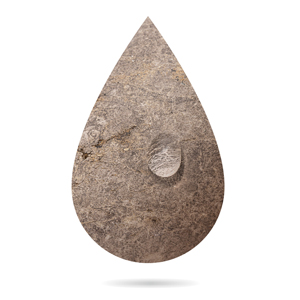
The use of these products is a concrete example of how green technology can respond to the demands of a rapidly changing sector.
Today, laboratories no longer have to choose between the environment and performance: sustainable digital printing guarantees high-level results, with a documented reduction in harmful substances emitted from chimneys.Those who wish to learn more about the advantages of these solutions can read the analysis of SICER’s eco-friendly ceramic inks and adhesives, which illustrates how these innovations are changing the face of the ceramic industry towards a cleaner and more responsible future.
Certifications and reporting for sustainability in ceramic laboratories
In the context of sustainable digital printing, certifications and reporting play a key role for ceramic laboratories that want to stand out for their transparency and efficiency. Integrating certified procedures, environmental monitoring systems, and the drafting of sustainability reports is not only a response to market demands but also a practical guarantee of quality and responsibility.
These activities make it possible to clearly demonstrate, both to customers and authorities, a genuine commitment to reducing environmental impact and complying with global standards.
The most sought-after standards and certifications
Compliance with internationally recognized standards is the first step in positioning oneself as a cutting-edge laboratory in the ceramic sector.
Several certifications have now established themselves as veritable “passports” for accessing the most demanding markets:
- ISO 14001: represents the benchmark for environmental management, requiring policies and procedures that guarantee the control and reduction of environmental impacts.
- ESG (Environmental, Social, Governance): increasingly in demand for a holistic assessment of corporate sustainability, this certification covers environmental, social, and governance aspects.
- Other types, such as specifications for emissions reduction and occupational safety, complete the picture for responsible and documented management.
Those who want a detailed overview can see SICER’s main ESG Certifications and understand how they affect sustainable digital printing laboratories in practice. You can also explore the topic in more depth in this dedicated article.
Reporting: transparency and continuous improvement
In modern ceramic laboratories, keeping track of environmental performance is essential. Sustainability reports allow you to:
- Document the results of laboratory analyses (emissions, consumption, air quality).
- Monitor improvements over time thanks to innovations such as water-based inks and adhesives.
- Respond promptly to requests from suppliers and customers who, increasingly, require measurable data on emission volumes, resource use, and production waste.
The transparency offered by reporting also facilitates auditing processes and control activities, simplifying the procedures for obtaining and maintaining certifications.
The role of the laboratory in the sustainability chain
The analysis and R&D laboratory is at the heart of every sustainable process in the ceramic industry.
Here, not only are new low-emission materials validated, but environmental parameters are also constantly monitored:
- Assessment of emissions before and after the introduction of new water-based formulations.
- Measurement of the impact of each production batch.
- Continuous testing of the performance of eco-friendly inks and adhesives.
This scientific approach is essential both for maintaining high standards and anticipating market demands, as well as facilitating the communication of achievements in environmental statements.Those who wish to learn more can consult the information on the environment and SICER certifications to discover the tools available to every laboratory that chooses sustainable digital printing.
Global goals and commitment to the future
Laboratories that choose certification and reporting are effectively investing in international competitiveness.
More and more markets are demanding tangible evidence of commitment to global goals, such as those of the UN’s 2030 Agenda.
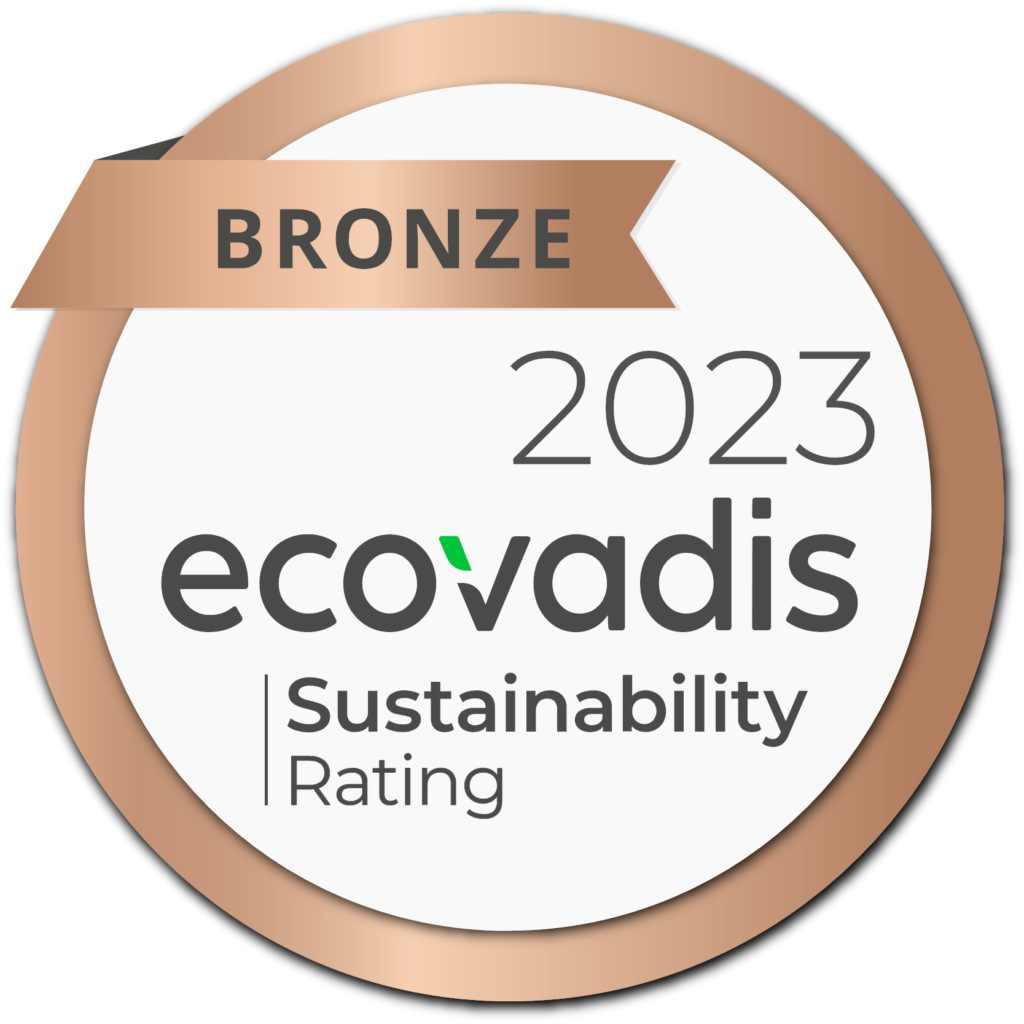
Adapting internal processes, adopting low-impact raw materials, and formalizing the results obtained means becoming an active and recognized part of a green supply chain.
To find out how companies are aligning their path with the United Nations’ sustainability goals, it is useful to read the in-depth analysis on Sicer and the UN 2030 Agenda and the concrete actions already implemented in the laboratory.In short, sustainable digital printing is no longer just technical innovation, but also traceability, reliable data, and a solid daily demonstration of responsibility towards future generations.
Future challenges and opportunities for sustainable digital printing in ceramics
Sustainable digital printing in ceramics is now at a decisive turning point. The results achieved with low-emission inks and water-based adhesives have opened up new avenues, but the path to truly green production requires continuous effort.
Understanding and anticipating the next technological, environmental, and market challenges is becoming essential for those who work in ceramic laboratories and do not want to lose competitiveness.
Let’s analyze the aspects to focus on in order to transform today’s difficulties into concrete opportunities for development.
R&D and adaptation to new environmental standards
Environmental regulations are rapidly evolving, requiring laboratories to periodically review compositions, procedures, and controls.
Water-based products are one of the main starting points, but the goal remains to further reduce emissions during firing while maintaining high performance.
Investing in research into purer pigments, non-toxic organic vehicles, and increasingly biodegradable components opens up immense possibilities for sustainable digital printing.

Here are some priorities for R&D in the sector:
- Optimizing water-based formulations to ensure maximum compatibility with different ceramic substrates.
- Improve the energy efficiency of printing and firing processes.
- Quickly adapt ISO and ESG standards to production lines.
Insights into the evolution of digital inks and their impact on the industry are available in the analysis dedicated to digital inks for sustainable ceramics.
Automation, digitization, and resource synergy
Research into sustainability in digital printing is not only concerned with the chemistry of materials, but also with the automation and digitization of production lines.
The integration of smart sensors and environmental control software allows for constant monitoring of emissions, water consumption, and overall efficiency, facilitating the transition to zero-waste production models.
Among the most significant opportunities are:
- Smart energy and water management, with real-time feedback.
- Computerization of process data for immediate reporting.
- Collaboration between specialized technical staff and digital platforms for continuous improvement.
This synergy between human skills and advanced technologies is explored in depth in the article on advanced technologies and human skills in ceramic printing.
Raw materials, short supply chain, and certifications
To make digital printing even more sustainable, companies are investing in raw materials from traceable supply chains, reducing transport and waste.
Choosing oxides, pigments, and vehicles of certified origin ensures greater reliability in environmental declarations and facilitates the acquisition of new quality marks required by the most demanding markets.
Critical points to focus on include:
- Selecting raw materials from suppliers that already comply with green criteria.
- Supporting recycling and processing water recovery projects.
- Implementing technical data sheets and environmental certifications for each production batch.
Customization and new sustainable decorative effects
Digital ceramic printing offers an unprecedented variety of aesthetic effects, thanks to the precision and versatility of water-based inks and adhesives.
The future will see an ever-increasing demand for customization, with the possibility of reducing waste thanks to tailor-made production and smaller batches.
For laboratories, this growing demand for customization opens up new scenarios:

- Development of new ranges of eco-friendly colors and finishes.
- Optimization of material effects by combining sustainable grits and inks.
- Experimentation with hybrid surfaces, combining digitalization and natural materials.
Those who want to better understand how innovation and sustainability are combined in digital ceramic printing can find practical ideas in the insights on digital ceramic printing: eco-friendly solutions or discover one of Sicer’s flagship products here.
New business models and partnerships
The path towards sustainable digital printing in ceramics will also lead to the emergence of new partnerships between raw material suppliers, laboratories, and end customers.
Cross-functional collaborations in the production chain offer the possibility of developing tailor-made products with guaranteed traceability and shared competitive advantages.
The main opportunities concern:
- Co-design pilot projects to reduce environmental impact.
- Shared programs for training and updating laboratory technicians.
- Research consortia to anticipate future regulations and create industry standards.
Looking beyond technical innovation, sustainable digital printing will increasingly be synonymous with collaboration and long-term growth, with the aim of delivering quality, low-emission products to the ceramic market that are truly in line with the environmental needs of today and tomorrow.
Conclusions
Adopting sustainable digital printing is not only an environmental choice, but a real strategic investment for every ceramic laboratory.
The use of water-based inks and materials offers concrete advantages in terms of quality, safety, and regulatory compliance, strengthening the competitiveness and perceived value of products.
Sicer continues to stand out with cutting-edge solutions that drastically reduce harmful emissions and improve well-being in production environments.
Learning more about innovative low-emission solutions or discovering how research is evolving in the field of digital inks for ceramics allows workshop technicians to stay up to date on best practices.
Staying informed through specialist blogs and consulting annual sustainability reports, such as those published by Sicer, helps identify new opportunities and maintain a path of responsible growth. Sustainable digital printing is now the starting point for a safer, more innovative, and more sustainable future for ceramics.
FAQ
It reduces harmful emissions, improves air quality in the workplace, and guarantees high-definition prints.
They are eco-friendly, easy to integrate into production processes, and comply with the most stringent regulations.
Yes, they are easy to integrate and allow emission limits to be met without modifying the systems.
ISO 14001 for environmental management and ESG for an overall sustainability assessment.
No, it guarantees the same color intensity and definition as traditional solutions, with additional environmental benefits.
The water-based inks and adhesives developed by Sicer drastically reduce VOCs, aldehydes, and TOCs, improving air quality in the laboratory and complying with European regulations.
Yes, they maintain high color definition and stability, offering decorative results equal to or superior to traditional formulations.
They significantly reduce harmful substances, offer optimal drying times, and are compatible with highly absorbent surfaces, simplifying processing.
Yes, Sicer’s processes and solutions comply with international standards such as ISO 14001 and support companies in ESG reporting and Agenda 2030 objectives.
Water-based formulations are designed to integrate easily into existing production lines without requiring structural changes to the plants.


